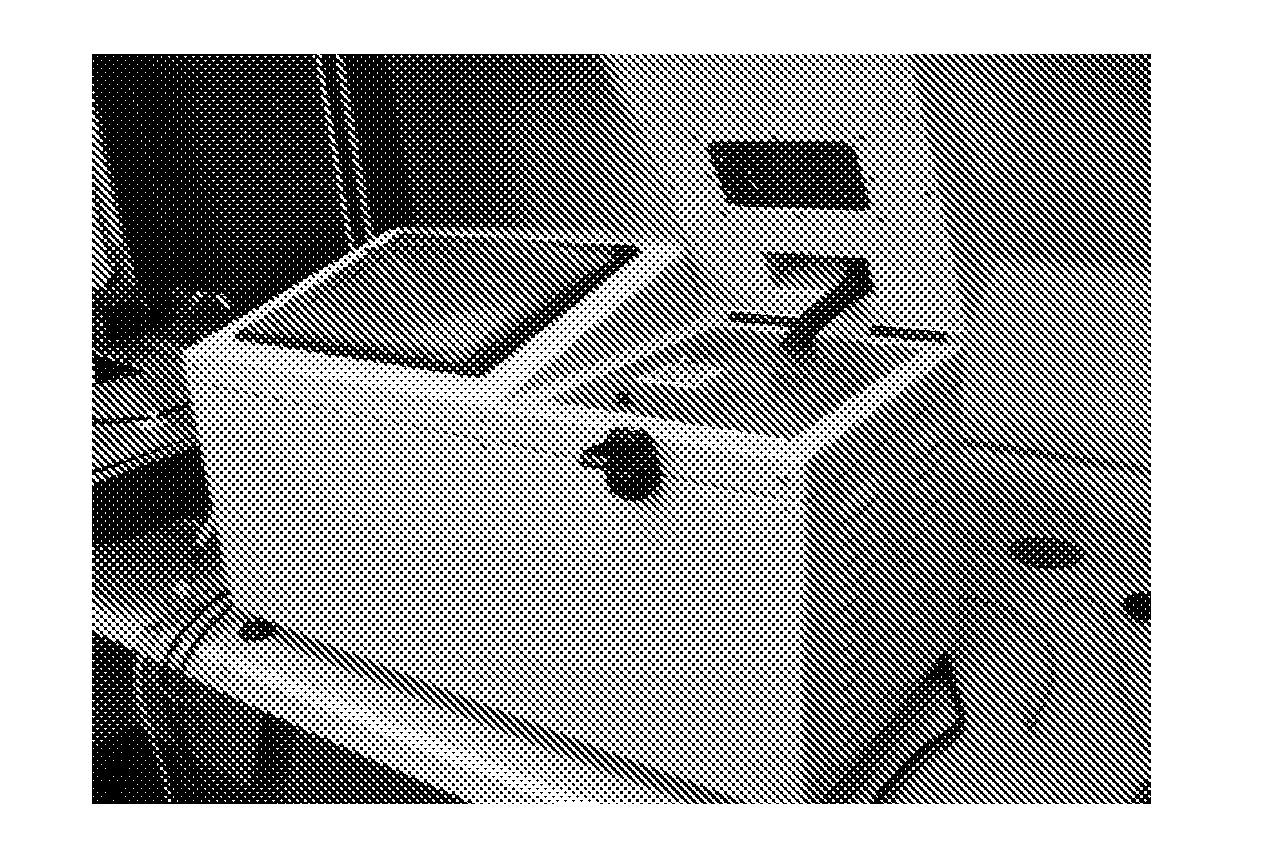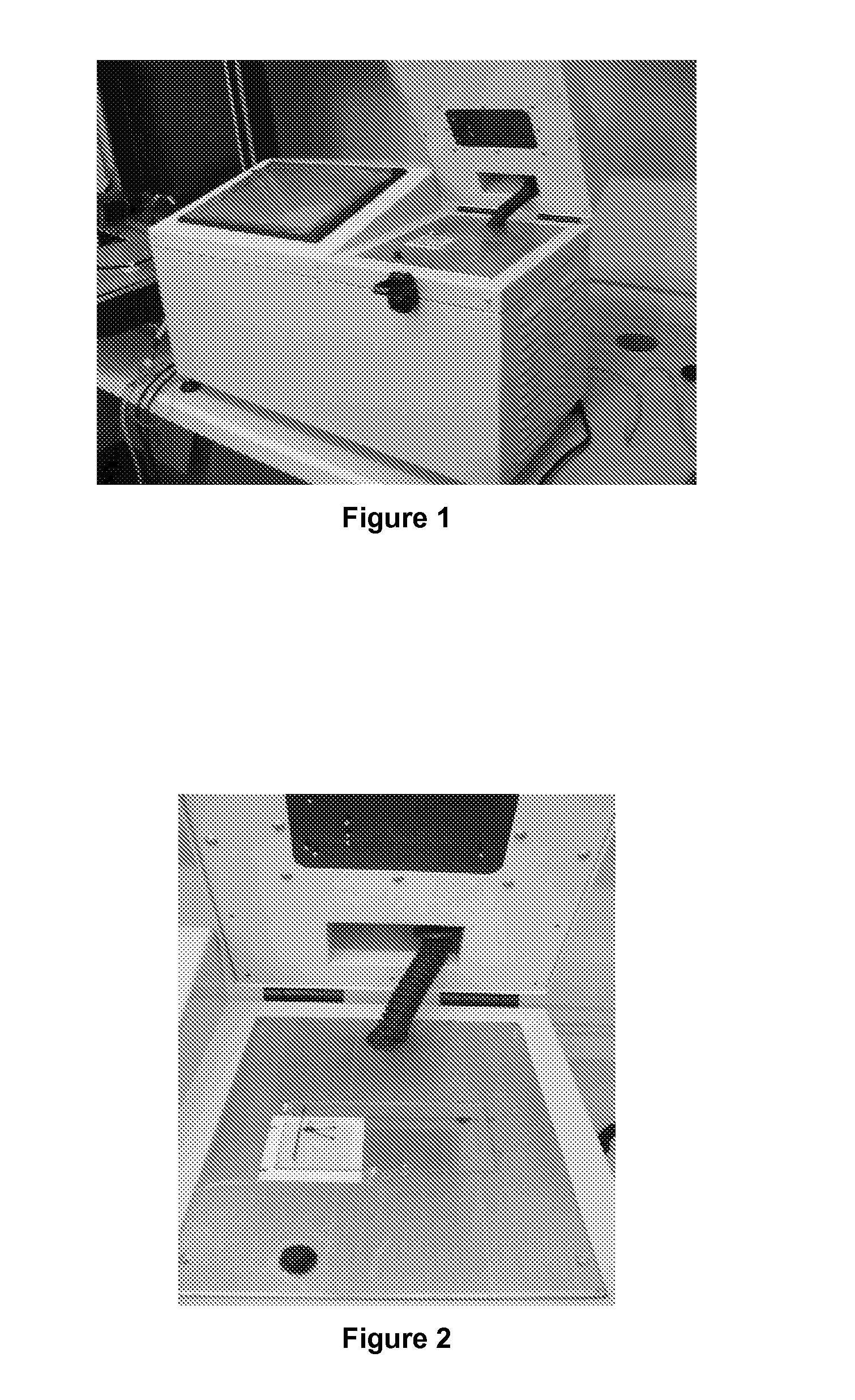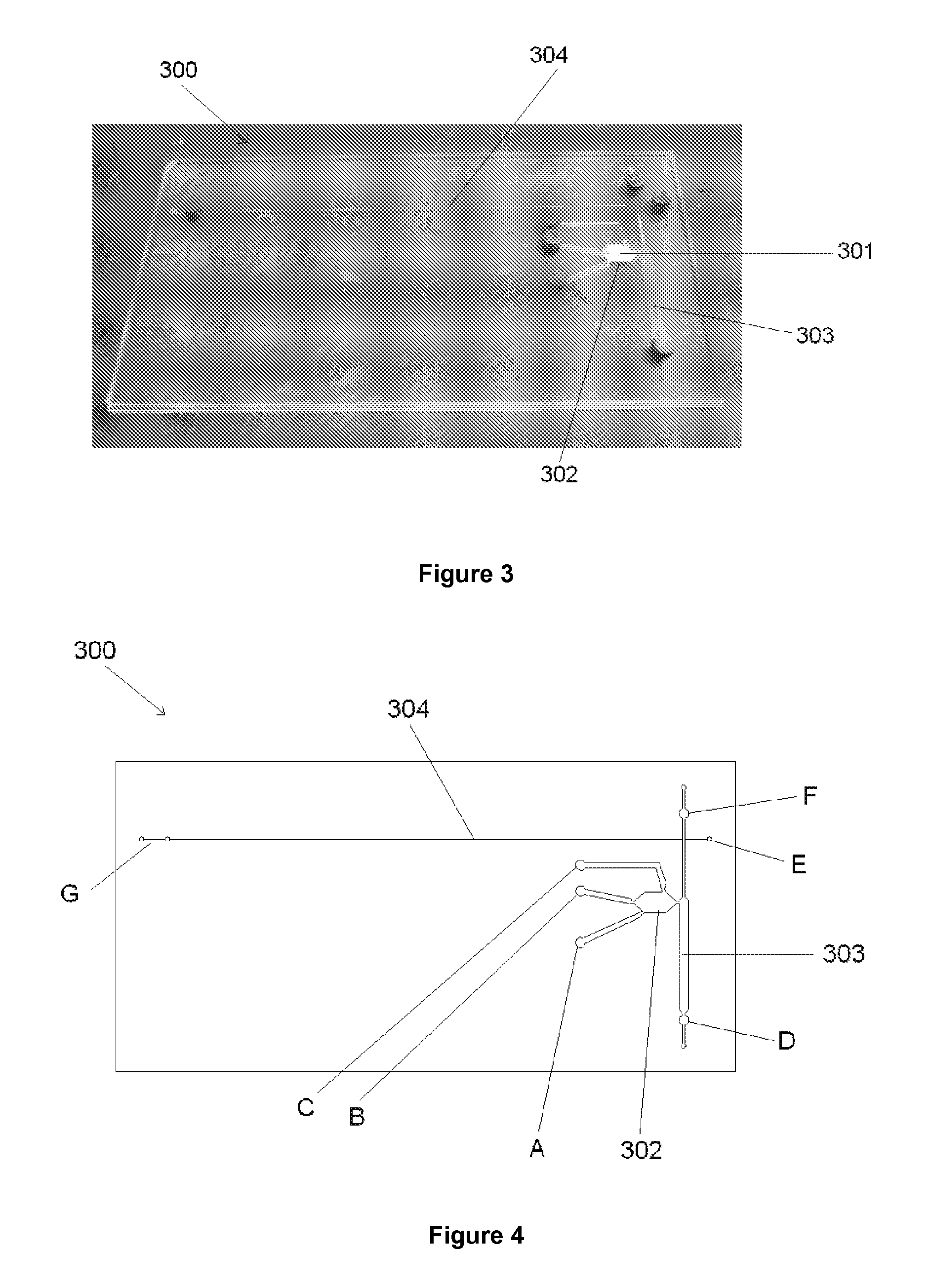Microfluidic apparatus and method for DNA extraction, amplification and analysis
a microfluidic and sample technology, applied in the field of microfluidic sample processing devices, methods and systems, can solve the problems of difficult to make a quick shortlist of suspects, use of dna, and potentially inefficient methods of manipulating microlitres of fluid, and achieve the effect of enhancing stability and manufacturing inexpensiv
- Summary
- Abstract
- Description
- Claims
- Application Information
AI Technical Summary
Benefits of technology
Problems solved by technology
Method used
Image
Examples
example 2
[0132]Preparation of PCR Gel
[0133]The PCR gel was prepared by dissolving low melting point agarose gel in DNA / RNA free distilled water and heating to 75° C. for 10 minutes. Once the gel was formed and whilst still in molten form the PCR reagents were added (2 μl of 10× NH4 buffer, 2 μl of BSA, 2 μl of forward primer, 2 μl of reverse primer, 1 μl of dNTPs, 0.4 μl of MgCl and 0.4 μl of Tag polymerase) and mixed, on cooling the gel retained the reagents. Electrodes B and D were secured into place and an electric potential of 100 Vcm−1 applied for 5 min, the experiment was performed on an ice block to maintain the integrity of the PCR reagents. Once the electro-kinetic movement was complete, the PCR gel was removed from the channel by pressure injection and collected. The resulting solution was then amplified in a thermal cycler, separated by slab gel electrophoresis and observed via the UV transilluminator.
[0134]The concentration of the gel and reagents was investigated to determine th...
example 3
[0140]Development of Reagent Gel
[0141]After the application of the electrical potential, the solution accumulated at each electrode was collected and the DNA quantified 65% of DNA recovered was found at the negative electrode whilst 22% was recovered from the positive electrode (at inlet port F of FIG. 4). This was likely due to a small amount of electrophoretic movement occuring when the DNA was introduced at the same port. The remaining DNA-(13%) was detected in the ethanol wash. These results support the claim that DNA can be succesfully extracted from the monolith by electro-osmotic flow in the concentration required for PCR amplification.
[0142]The DNA extracted from the monolith by electro-osmotic pumping was of sufficient quantity and quality for PCR amplification to be carried out. The results also established the stability of the reagents in gel form even when a relatively high electric field was used.
[0143]A series of agarose gel concentrations were then investigated (10%, ...
example 4
[0146]Preparation of Reagent Gel
[0147]A microfluidic device (300) as shown in for example FIG. 3 or 4 was cleaned and prepared by flushing through with 1M hydrochloric acid followed by 1M sodium hydroxide and deionised water before drying. The PEO gel was loaded into the separation channel (304) of the microfluidic device (300) by pressure injection into port G.
[0148]Agarose gel was then prepared by dissolving 0.0029 g of low melting point agarose in 100 μl of DNA / RNA free water, creating a gel concentration of 2.94%. The solution was then heated in a water bath at 75° C. for 10 min to allow the gel to form. While the gel was still in liquid form, 10.2 μl of the gel was added to 9.8 μl of the sample, the visualisation agent (in this case fluorescently labelled primers) was added and mixed. The final gel solution which had a concentration of 1.5%, was injected into the microfluidic device warm by pressure injection into port E in order to ensure equal filling of sample matrix into bo...
PUM
| Property | Measurement | Unit |
|---|---|---|
| sizes | aaaaa | aaaaa |
| sizes | aaaaa | aaaaa |
| v/v | aaaaa | aaaaa |
Abstract
Description
Claims
Application Information
 Login to View More
Login to View More - R&D
- Intellectual Property
- Life Sciences
- Materials
- Tech Scout
- Unparalleled Data Quality
- Higher Quality Content
- 60% Fewer Hallucinations
Browse by: Latest US Patents, China's latest patents, Technical Efficacy Thesaurus, Application Domain, Technology Topic, Popular Technical Reports.
© 2025 PatSnap. All rights reserved.Legal|Privacy policy|Modern Slavery Act Transparency Statement|Sitemap|About US| Contact US: help@patsnap.com



